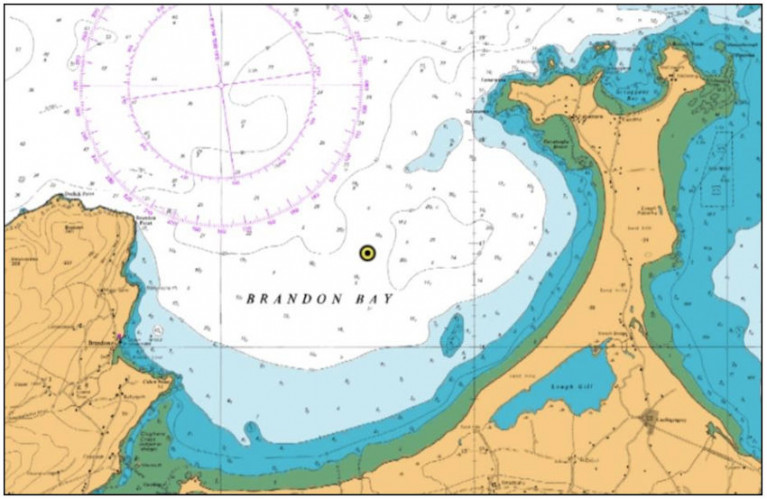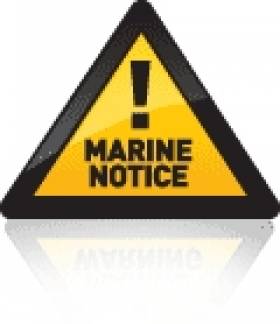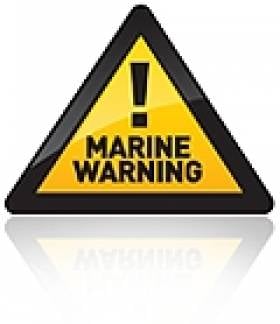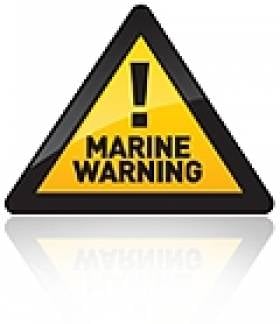Displaying items by tag: Waverider
Waverider Buoy Deployment in Brandon Bay
Mariners in Brandon Bay in Co Kerry are advised of the Marine Institute’s deployment of a Waverider buoy over the coming days, subject to weather conditions.
The Waverider is a yellow spherical buoy, 1m in diameter ad equipped with an antenna and light at a height of approximately 2m. The light will flash yellow for five seconds every 20 seconds in hours of darkness.
The buoy is being deployed for 12 months in the centre of Brandon Bay (52 16.94 N, 010 05.69 W) by the Ocean Supporter (Callsign EITS6), which will display appropriate signals and lights.
More details can be found in Marine Notice No 55 of 2020, a PDF of which is available to download below.
Datawell Waverider Buoy Off the West Coast of Ireland
Draft Marine Notice No. 49 of 2013
This Marine Notice supersedes Marine Notice No. 50 of 2012
Notice to All Shipowners, Fishing Vessel Owners, Agents, Shipmasters, Skippers, Fishermen, Yachtsmen and Seafarers
The Department of Transport, Tourism and Sport has been advised that ESB International have deployed a Datawell Waverider buoy, off the West coast of Ireland.
The buoy was deployed on 15th October 2013. See position of the buoy which has a drift radius of up to 250m.
Location Latitude (WGS84) Longitude (WGS84)
Killard 1 52 ° 46' 26" N 009 ° 35' 11" W
1. Approximately 3.7 km northwest of Killard Point, Near Doonbeg, Co. Clare.
The buoy is spherical in shape and yellow in colour. A photograph of this type of buoy is attached at the Annex below.
An AIS A-to-N Type 1 transmission will be implemented from the buoy. Flash characteristics are as follows: pattern FL 5, Yellow, every 20 seconds.
All vessels are requested to give the buoy a wide berth.
Marine Notice No. 50 of 2012 is hereby withdrawn.
Irish Maritime Administration,
Department of Transport, Tourism and Sport,
Leeson Lane, Dublin 2, Ireland.
Marine Notice: Rock Placements Off Co Dublin & Buoy Deployments Off West Cast
#MARINE WARNING - The latest Marine Notices from the Department of Transport, Tourism and Sport (DTTAS) advise mariners to keep a look-out for rock placement off north Co Dublin and buoy placements off Co Mayo and Co Clare.
Operations were due to commence on Saturday 8 September at North Beach in Rush, Co Dublin for the placement of rocks offshore and in the Irish Sea for a period of 10-12 days weather permitting.
The works are being undertaken by DPFPV Tideway Rollingstone (call sign PHYR) and DPFPV Stornes (call sign PCKX) at various locations detailed in Marine Notice No 49 of 2012, a PDF of which is available to read or download HERE.
These vessels are operating on a 24-hour basis and will display appropriate days shapes and lights. They are also transmitting an AIS signal and will keep a listening watch on VHF Channel 16 for the duration of the works, which involve the deployment of survey ROVs and fall pipe that will restrict the vessels' movements. All mariners are instructed to give a wide berth.
Meanwhile off the west coast, ESB International has deployed two Waveroder buoys as positions near Achill Island in Co Mayo and Doonbeg in Co Clare.
The Achill buoy will be operational for a minumum of three months from now, while the Killard buoy will be operational for a minimum of 10 months having been recently relocated. Both are spherical and yellow in colour. All vessels are requested to give the buoys a wide berth.
Full details of their positions are included in Marine Notice No 50 of 2012, a PDF of which is available to read or download HERE.
Marine Notice: Deployment of Waverider Buoys
The latest Marine Notice from the Department of Transport, Tourism and Sport (DTTAS) advises that two Waverider buoys are set to be deployed off the west coast from tomorrow 10 October.
The buoys will be operational for between 12 and 24 months at two locations, one 6km west of Achillbeg Island, Co Mayo and one 2km north northwest of Captain's Hill, Co Clare. Both have a drift radius of up to 100m.
All vessels in the areas above are requested to give the buoys a wide berth. They will be easily spotted by their spherical shape, bright yellow colour and flash pattern (FL 5, Yellow, every 20 seconds).
Full location co-ordinates and further details are included in Marine Notice No 48 of 2011, a PDF of which is available to read and download HERE.



























































